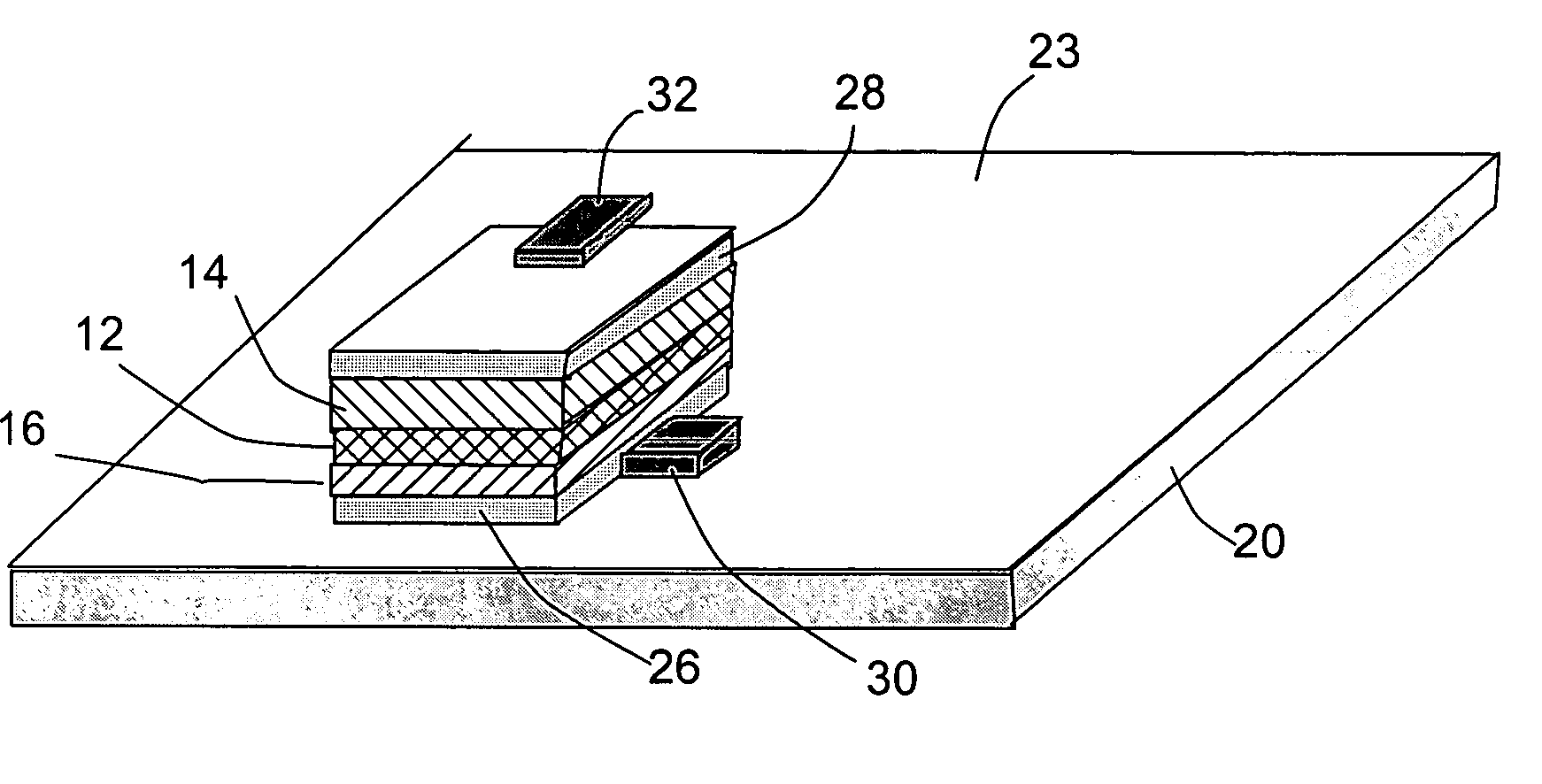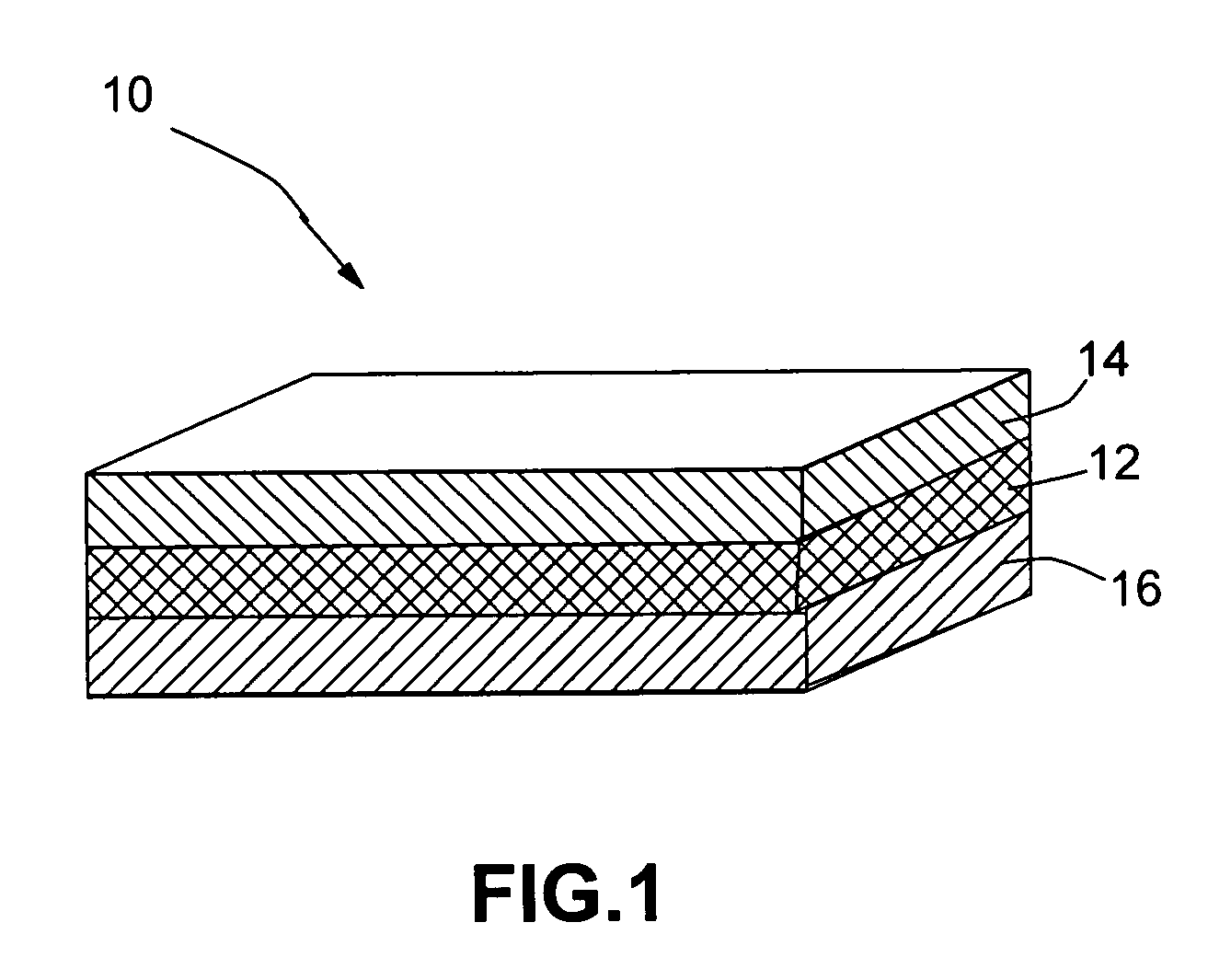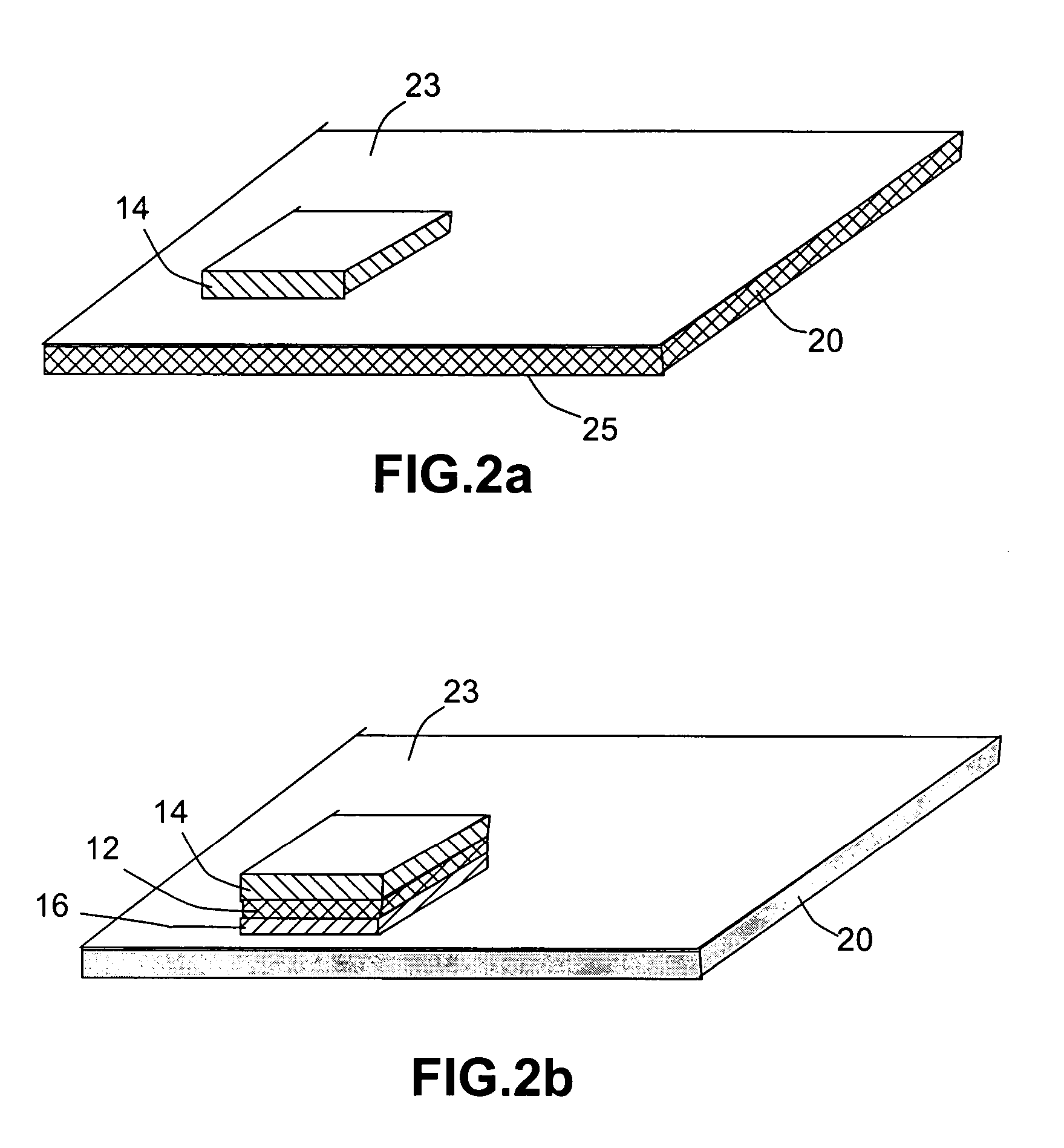Open electrochemical cell, battery and functional device
a functional device and electrochemical cell technology, applied in the direction of non-aqueous electrolyte cells, cell components, sustainable manufacturing/processing, etc., can solve the problem that pure lithium is not a recommended active anode material, and achieve good contact, good mechanical integrity of the resulting multi-layer configuration, and adequate moisture level
- Summary
- Abstract
- Description
- Claims
- Application Information
AI Technical Summary
Benefits of technology
Problems solved by technology
Method used
Image
Examples
example 1
[0040] A solution containing 1800 mg of zinc-chloride (a deliquescent material and an ion conductive material) in 1.2 ml of water was prepared. A 4.5 cm×7 cm strip of a filter paper was thoroughly wetted with this solution by dipping. A mixture of 300 mg zinc powder with the above solution was prepared and was printed on one side of the paper strip serving as the anode layer. On the other side was printed a mixture of 250 mg manganese-dioxide and 50 mg of a conductive carbon powder, together with the above solution, serving as the cathode layer. When electrical contacts were made with both sides and were connected over a load an electrical current was measured. A current of 12 micro-ampers per cm2 at an initial voltage of 1.7 volts was obtained. The voltage drops to a steady state of 1.4 volts for 11 days in a laboratory air (at room temperature with the humidity level being fluctuated between 25% and 75%).
example 2
[0042] Methyl methacrylate (2.00 g, 0.020 mole) was added to N,N-dimethylacrylamide (37.67 g, 0.38 mole). This resulted in a reaction mixture having 0.05 weight fraction methyl methacrylate and 0.95 weight fraction N,N-dimethylacrylamide. The cross-linking agent ethylene glycol dimethacrylate (0.05% by weight based on total reaction mass) was then added. The reaction mixture was poured into a polypropylene sheet mold with an aluminum foil linen, with which the reaction mixture was in direct contact. The mold was then sealed off from the atmosphere and subsequently exposed to 1 MRad gamma radiation. The cured hydrogel was peeled from the foil and then “washed” in a balanced salt solution. The resulting hydrogel is highly water compatible, but not water soluble. In this case, water molecules penetrate into the interstices between cross-linked chains, but do not dissolve to separate the chains. The gel was dried and then ground into a fine powder.
[0043] A small amount of the dry gel p...
example 3
[0045] The same potassium-hydroxide solution as in Example 2 was prepared and a porous structure was wetted with this solution. A mixture of the solution with zinc powder was pasted on one side of the porous structure to form an anode layer and a similar mixture with manganese-dioxide powder was pasted on the other side of the porous structure to form a cathode layer. An output voltage of 1.5 volts was measured. An appreciable current value was measured when the two layers were contacted over a load. This cell did not dry out in the open air.
PUM
| Property | Measurement | Unit |
|---|---|---|
| Thickness | aaaaa | aaaaa |
| Structure | aaaaa | aaaaa |
| Solubility (mass) | aaaaa | aaaaa |
Abstract
Description
Claims
Application Information
 Login to View More
Login to View More - R&D
- Intellectual Property
- Life Sciences
- Materials
- Tech Scout
- Unparalleled Data Quality
- Higher Quality Content
- 60% Fewer Hallucinations
Browse by: Latest US Patents, China's latest patents, Technical Efficacy Thesaurus, Application Domain, Technology Topic, Popular Technical Reports.
© 2025 PatSnap. All rights reserved.Legal|Privacy policy|Modern Slavery Act Transparency Statement|Sitemap|About US| Contact US: help@patsnap.com



